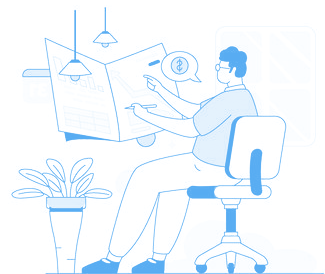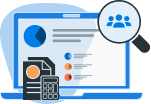What Does Gamification Mean in HR?
Gamification is the practice of applying game-based elements like points, levels, challenges, rewards, and leaderboards into non-gaming environments. In HR, gamification transforms traditional, routine processes into interactive and enjoyable experiences that encourage participation and improve outcomes.
The idea is simple: people are naturally motivated by rewards, recognition, and a sense of achievement. When these elements are introduced into the workplace, employees are more likely to stay engaged, learn effectively, and perform better.
Examples of Gamification in HR
- Onboarding: New hires earn badges for completing orientation tasks, making the process smoother and more engaging.
- Performance Tracking: Employees climb leaderboards by achieving targets or completing milestones.
- Wellness Programs: Staff earn points for healthy habits like walking, exercising, or attending wellness sessions.
- Continuous Learning: Training modules designed as 'levels' encourage employees to progress and unlock new skills.
Gamification in the workplace is not about turning work into a game; it's about using game mechanics to inspire motivation and make work more meaningful.
How Can Gamification Improve Employee Engagement?
Employee engagement is one of the biggest challenges HR teams face, and gamification provides a creative solution. Engagement grows when employees feel recognized, rewarded, and challenged, all of which gamification directly addresses.
Ways Gamification Boosts Engagement
- Recognition and Rewards: Employees receive immediate acknowledgment for their efforts in the form of points, badges, or certificates. This builds confidence and satisfaction.
- Friendly Competition: Leaderboards encourage healthy competition that pushes employees to perform without feeling pressured.
- Interactive Challenges: Work assignments become more exciting when framed as missions or quests to achieve.
- Progress Tracking: Employees can see how far they've come in a journey, motivating them to stay committed.
When applied effectively, gamification for employee engagement creates a positive workplace culture where employees look forward to contributing, learning, and growing.
Benefits of Gamification in Recruitment and Training
Gamification is not limited to day-to-day engagement. It plays a powerful role in recruitment and corporate training, making processes more innovative and effective.
Gamification in Recruitment
Recruitment often feels transactional, but gamification can transform it into an interactive experience.
- Skill-Based Games: Employers can design assessments that test real-world problem-solving abilities through simulations.
- Interactive Interviews: Instead of just Q&A, candidates may complete challenges that mirror actual job tasks.
- Candidate Experience: A gamified application process makes organizations stand out, leaving a strong impression on potential hires.
Gamification in talent recruitment helps HR teams identify not only the most qualified candidates but also the most motivated and adaptable ones.
Gamification for Corporate Training
One of the most popular uses of gamification is in employee learning and development. Traditional training methods often fail to engage employees, but game mechanics transform training into an exciting journey.
- Levels and Challenges: Employees progress through different stages of learning like levels in a game.
- Badges and Rewards: Achievements are celebrated, making employees eager to continue learning.
- Knowledge Retention: Studies show gamified training improves retention because employees actively participate instead of passively consuming content.
- Real-Time Feedback: Employees can instantly see their progress, helping them identify areas for improvement.
With gamification for corporate training, employees not only complete their programs but also enjoy the process, leading to stronger skill development.
Which Companies Are Using Gamification Successfully in HR?
Gamification is not just a buzzword; it has been embraced by some of the world's top companies with measurable success.
- Deloitte: Introduced gamification into leadership training by adding missions and leaderboards. More engaged participants and greater completion rates are the outcomes.
- Google: Incorporated gamification into its travel expense system, rewarding employees for cost-saving decisions. This made a tedious process enjoyable and fulfilling.
- PwC (PricewaterhouseCoopers): Uses gamified online assessments to evaluate potential hires, making the recruitment process more interactive and appealing.
- Cisco: Gamified its social media training program, allowing employees to earn certifications through levels and achievements.
These real-world applications highlight how gamification in the workplace can be used across industries for different HR needs, training, recruitment, engagement, and more.
How Can HR Teams Implement Gamification at Work?
Gamification requires careful planning and alignment with organizational goals. It's not about adding games randomly; it's about strategically integrating game mechanics into HR processes to enhance outcomes.
Key Steps for Implementation
- Define Objectives: Identify whether the focus is on improving engagement, enhancing training, or streamlining recruitment.
- Select the Right Platform: Use HR tools or gamification software that supports features like leaderboards, badges, or progress tracking.
- Design Reward Systems: Rewards should align with company culture, ranging from recognition and certificates to bonuses or career development opportunities.
- Communicate Clearly: Ensure employees understand the gamification system and how it benefits them.
- Monitor Results: Track participation rates, performance improvements, and feedback to refine the system.
- Scale Gradually: Start small with training or onboarding programs and expand gamification to other HR processes over time.
When HR teams implement gamification thoughtfully, it can create a more motivated, skilled, and satisfied workforce.
Ready to make your workplace more engaging, efficient, and future-ready? Discover how Qandle helps HR teams implement gamification strategies that transform employee engagement, recruitment, and training. Start your journey toward a gamified HR process today.


 Back to Glossary
Back to Glossary